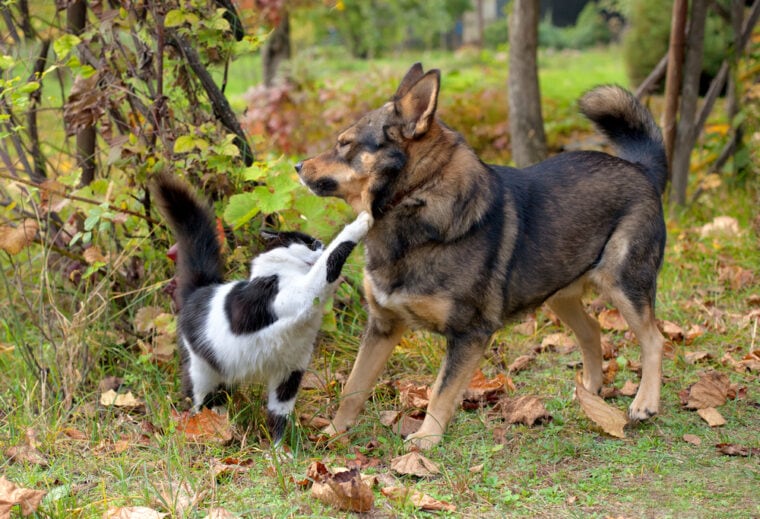
As cat parents, we’re all familiar with, and have, at some point or other, been on the receiving end of some of that infamous “cattitude”. Sometimes, it’s our non-human family members that take an almighty swipe or a paw bop to the head, but why does this happen?
If your cat frequently swats at your dog, this could be happening for one of several reasons. Let’s explore swatting behavior to help you get to the bottom of things.
The 6 Reasons Your Cat is Swatting Your Dog
1. Playfulness
Cats that get along well with their canine brothers and sisters could well just be playing or enticing the dog to play when they swat at them. It’s normal for dogs and cats to chase one another, roll onto their backs, pin each other down, pounce at one another, and nudge or paw at one another in play.
As long as nobody is getting hurt, being too rough, intimidating the other, or displaying aggressive body language, this is okay. Keep an eye out for things getting out of control and step in if necessary.
You can tell when a cat is in a playful mood by observing their body language. A playful cat’s ears will be upright and pointed forward, the pupils may dilate with excitement, and the tail is typically raised up and flicking. If your cat is engaging in very gentle play with your dog, they may lay on their back, exposing their belly while swatting at the dog. Showing the belly is a sign of trust.
As for playful dogs, they tend to play bow, “grin”, wiggle about, or wag their tails, and their movements will be flowing rather than rigid. They will appear bouncy yet relaxed, and they may stick their tongue out.
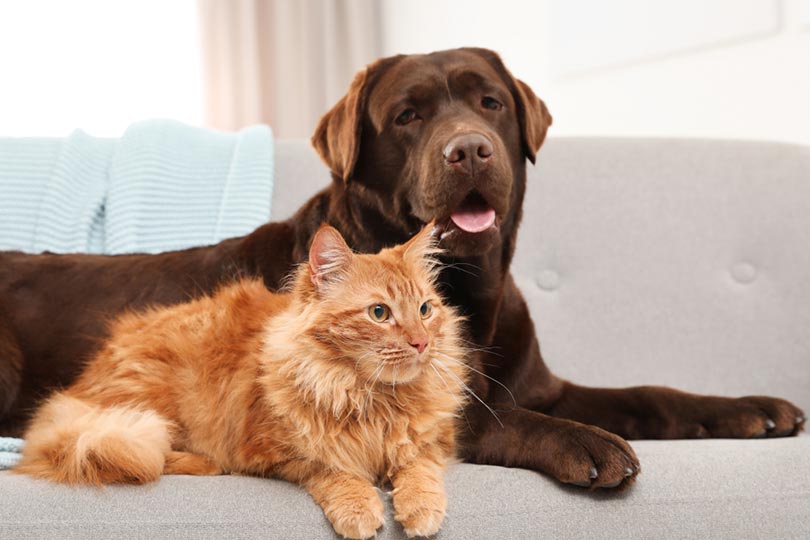
2. Annoyance
If your playful dog is getting too enthusiastic or the cat is simply in no mood to play, they may swat at the dog to put them in their place. Other signs of annoyance in cats include dilated pupils, turning away from the source of annoyance (in this case, the dog), and a twitching tail. In short, swatting when irritated is your cat’s way of telling your dog to get lost!
3. Stress
A cat that is stressed or frightened around a dog may become aggressive and even get the claws out if the dog is unlucky. This is more likely to happen if one of the pets is new and hasn’t had enough time to get used to their housemate yet. Even if your dog is not aggressive at all, a cat that hasn’t been exposed to or socialized with dogs can still lash out if they feel afraid enough. Also, keep an eye out for signs that your dog might be bullying your cat.
In addition to lashing out with their paws, signs of fear in cats to watch out for include the ears being pinned back against the head, ears flicking back and forth, dilated pupils, an arched back, hair standing on end, rigid body posture, rigid, upright tail or curled-around tail, hissing, spitting, and growling.
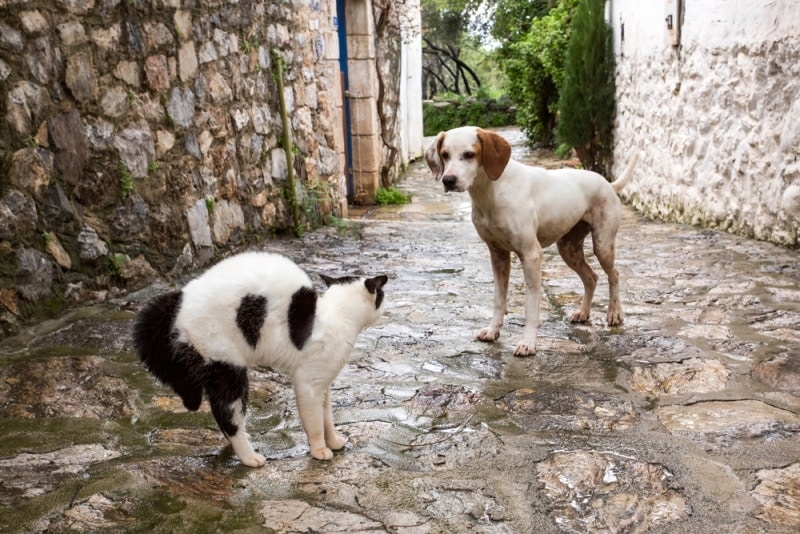
4. Showing Who’s Boss
Cats are very territorial by nature, so, if you’ve recently welcomed a new dog into your home, your cat might be swatting at them in a display of dominance. Even after the new dog has been with you for quite some time, the cat might still do this now and then as a quick reminder of who is in charge!
This kind of behavior is especially likely if the dog gets a little too nosy for comfort. For example, if they try to stick their nose in one of the cat’s ‘claimed’ spots, like the cat’s bed or a favorite hiding spot, they may well emerge with a snout that has received a thorough bopping.
5. Overstimulation
Sometimes, if a cat gets overstimulated by something tantalizing outside, like a bird at the window, they redirect their aggressive response onto something else because they can’t reach their preferred target.
If your dog has the misfortune to be in the vicinity at this time, they may get swatted simply because the cat got too stimulated at that moment. This is what’s known as “redirected aggression.”
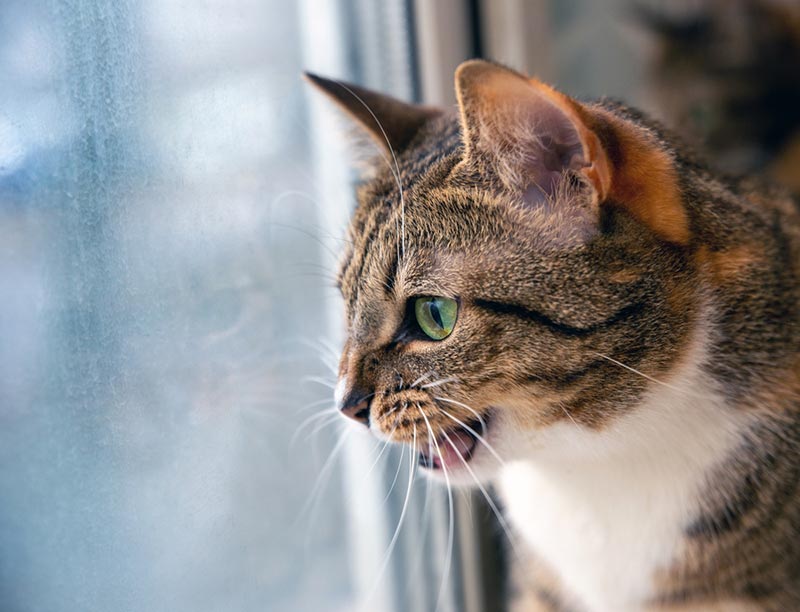
6. Illness or Pain
If your cat isn’t feeling at their best or is in some kind of pain, it’s natural that they’ll be more cranky than usual and won’t want your dog to get too close.
This can cause them to act out of character, so, if your cat has suddenly started swatting at your dog when they didn’t do this before, be vigilant for signs of illness and get them checked out by a vet if you suspect something.
Helping Cats & Dogs to Get Along
If you’ve determined that the cause of the swatting is a personality clash, you’re no doubt looking for a way to improve the situation. Here are some tips for helping cats and dogs live in harmony together.
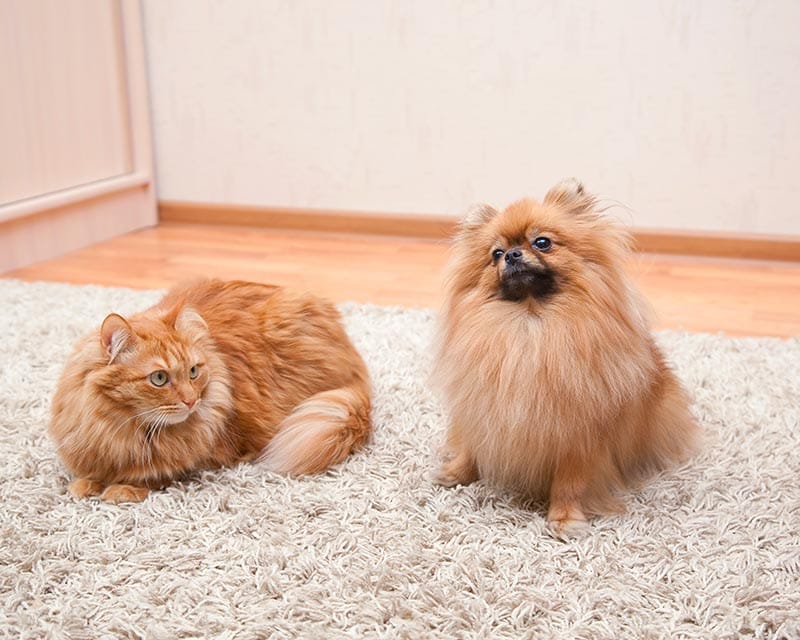
Introduce Cats & Dogs Gradually
Moving in a new fluffy friend is a wonderful time for you, but it can be incredibly stressful for both the new pet and the resident pets. To increase the chance of your cat and dog getting along, you’ll need to keep them separated at first and let them slowly get used to each other’s scent before they physically meet.
First meetings are best done in a very controlled manner, from behind a screen door or baby gate if possible. Leashing your dog for the first meeting is another option. The trick is to keep things calm and be ready to quickly end physical meetings if someone gets too excited or becomes aggressive. Reward both your cat and dog for positive or at least calm interactions.
Give Everyone Their Own Space
Letting your new cat or dog share the resident cat or dog’s favorite spots early on is a recipe for disaster. This is fine if they get comfortable with each other and don’t mind snuggling up together, but, otherwise, everyone should have their own space to prevent the risk of either animal acting aggressively due to territorial instinct.
Separate Food Bowls & Eating Spaces
It’s not only important to give your cat and dog their own space; they should also eat away from one another, but, ideally, at the same time. This will help both your cat and dog feel secure in the fact that their food is theirs alone and keeps greedy pets away from their housemate’s food (trust us when we say the aftermath of a dog sneaking cat food is not pretty).
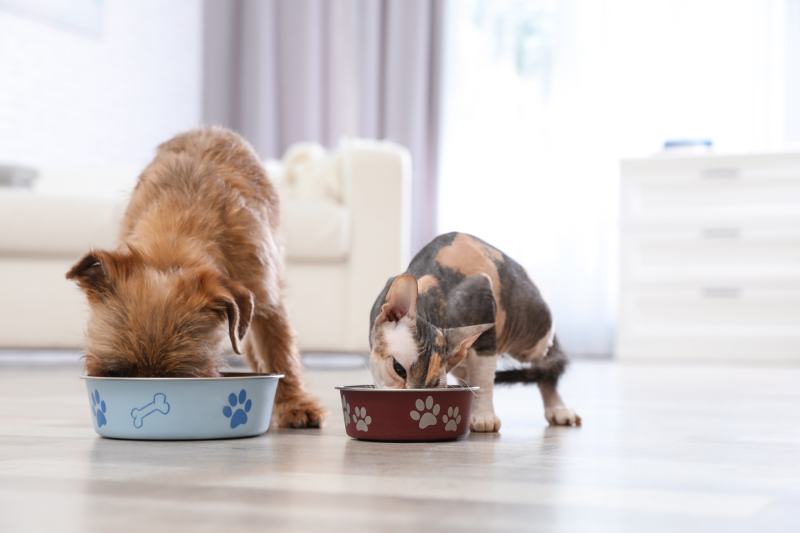
Spend Quality Time with Everyone
Making sure nobody feels neglected or left out is crucial for ensuring peace reigns. Sometimes, cats get jealous, which could lead to swatting and other aggressive behaviors being directed at the dog, so it’s important to make all pets feel secure and loved in your home.
Reward Positive Interactions
When your cat and dog interact nicely together or even if they can just ignore each other while being in the same room, reward and praise them both. This could be with a tasty treat or a play session, depending on what motivates them.
Ensure the Dog Knows Basic Commands
If your dog knows basic commands like “sit”, “come”, and “leave it”, these can be very useful when it comes to interactions with your cat. Basic commands allow you to call your dog off if things start to get a little heated and help ensure everyone’s safety.
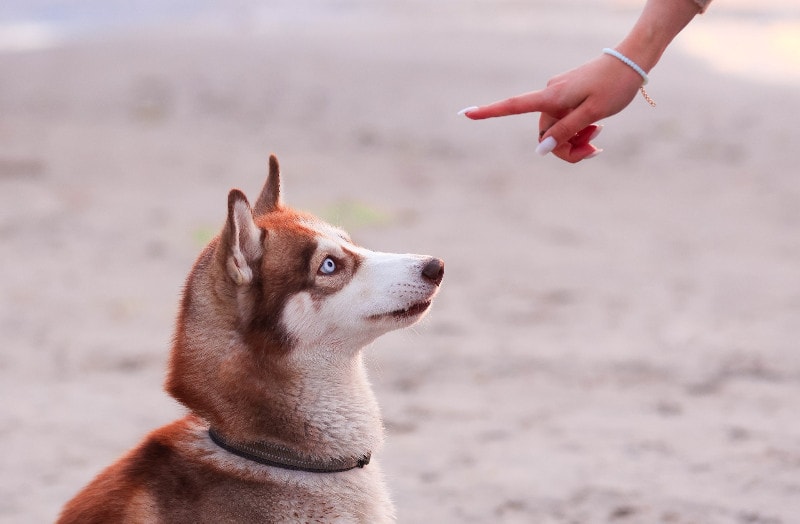
Final Thoughts
Hopefully, your cat is just swatting your dog playfully, but if you suspect it may be more than just a bit of mischief, you might want to supervise your cat’s interactions with your dog to make sure things don’t get nasty. If your cat is behaving aggressively all of a sudden, it could be due to an underlying medical condition, so it’s time for a checkup at the vet.
Featured Image Credit: vvvita, Shutterstock






